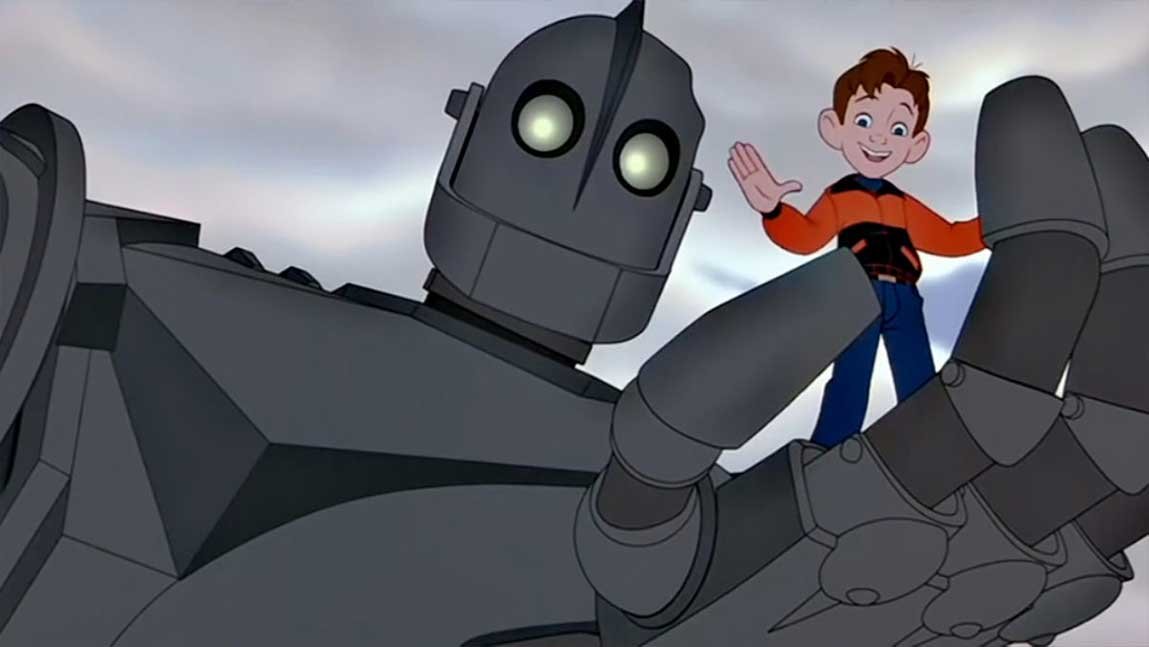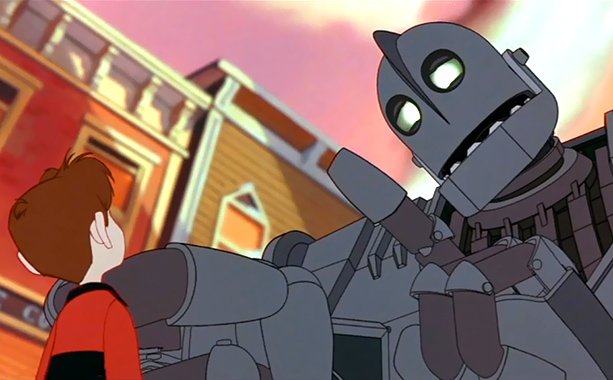The Iron Giant (1999) Film Review and Summary
SOFT 9/10
The fear of the unknown is a shared feeling among many. Expecting the unexpected is much easier said than done, and when some are presented with an unidentifiable challenge or circumstance, many panic or give into irrationality. When the Iron Giant (Vin Diesel) crash lands in a small town in Maine, he is greeted with the same panic that you’d expect in a situation like this, except there is certainly not a single precedent that could prepare people for his 100+ foot stature.
The Giant scares many and causes physical carnage on the properties of others while he tries to figure out what to do with this new environment. This is until one fateful night where Hogarth Hughes (Eli Marienthal) saves the mechanical beast from electrocution after he attempts to devour a power plant. This effectively glues them together in an unmistakable bond for the remainder of the film, giving the Giant a moral compass and Hogarth a friend that he’s always wanted. Hogarth is the son of Annie Hughes (Jennifer Anniston), a single mother who does her best to provide for her son, as well as maintaining his wild imagination and desires. One of these desires includes his desperation for a pet, where he would constantly find misfit wild animals and attempt to domesticate them. Now, he has the Giant, a sizable replacement for his requests.
Inevitably, the massive robot causes a lot more of a disturbance than intended, catching the attention of the United States government, and Agent Kent Mansley (Christopher McDonald) in particular. Mansley infiltrates Hogarth’s home in order to stalk his every move and catch wind of what info he can about the Iron Giant. The Iron Giant (1999) is set in the 1950s, a time of peak paranoia in the nation due to the heightened fear of atomic warfare during the Cold War. Instead of learning a typical educational curriculum, Hogarth finds himself watching instructional videos about how to duck-and-cover in the emergency of a nuclear attack. Unlike Hogarth, Kent sees the Giant as an foreign attempt to decimate the country from the inside, adding to the film’s pressing theme of irrational prejudice.
Preconceived notions are expressed and then convincingly dismantled throughout the film to translate the dangers of judging a book by its cover. There is obviously Kent’s bias, but also other examples like trash-man Dean McCoppon (Harry Connick Jr.) who seems like a sleazy junkyard owner, but actually uses his scraps to create pieces of art. Dean accompanies Hogarth on many of his experiences with the Giant, as there is a shared feeling of isolation that Dean can relate to with the robot. The Iron Giant initially inhabits Dean’s junkyard as just another piece of mechanical garage for storage, but the two progressively build a connection through creative collaboration. Embracing the unfamiliar is incredibly difficult, but The Iron Giant showcases the benefits of tolerance and inclusivity in times of confusion, rather than immediate panic.
The film’s animation style greatly bolsters the grand nature of the Giant’s physical demeanor, as he is seen in 3 dimensions, rather than the standard 2. He is boxy and rigid, but also surprisingly nimble. Vin Diesel’s vocals are pitched down as well, eliciting a gruffness that entices you into hanging on to every slither of minimal dialogue that is uttered. Moreover, when design styles clash as they do in this film, it creates a powerful unspoken understanding of contrast within characters.
There is something about children’s movies like this that always strikes a chord with me. Yes, they are predominantly marketed for “children”, but wield such a mature level of subversiveness that it can be enjoyed by anybody. The innocence of films like this also accentuate its emotion for me, as I can truly digest it as a beautiful story of morality, rather than a pretentious mess that is fueled by an underlying agenda. The Iron Giant is a giant marvel of animated film.


